Sinovčić Defends Title in 100m Backstroke at World Para Swimming Championships
ZAGREB, 13 June 2022 - Dino Sinovčić of Croatia won the gold on Sunday in the men's 100 m backstrokes at the World Para Swimming Championships taking place in Funchal, Portugal.
Matias de Andrade came second and the bronze went to Italian para swimmer Antonio Fantin.
Sinovčić thud defended his title after he became the world champion in this swimming event in London in 2019.
Sinovčić won a bronze in the men's 100m backstroke S6 at the Tokyo Paralympics.
To read more about sport in Croatia, follow TCN’s dedicated page.
Croatian and Ukrainian Children Participate in Savudrija Bay Seabed Cleanup
ZAGREB, 13 June 2022 - Over 60 children from Ukraine and from Zagreb and the quake-hit areas of Banovina took part in an environmental drive called "Cleaning Without Borders" to remove underwater waste in Savudrija Bay on Saturday and Sunday.
The children joined forces with divers from Croatia and Slovenia in this campaign.
The main objective of the drive is to clear the sea bed of waste as well as to draw attention to the global problem of sea pollution and raise public awareness of the importance of preserving the flora and fauna of the Adriatic Sea.
It is very important that children get into the habit of helping to preserve the sea environment, Economy and Sustainable Development Ministry State Secretary Mario Šiljeg said.
The campaign lasted several days, and the children were accommodated in the Veli Jože camp where educational workshops were also organized.
For more, check out our lifestyle section.
Croatia Logs 19 New Coronavirus Cases
ZAGREB, 13 June 2022 - In the last 24 hours there have been 19 new cases of the infection with coronavirus, and currently, there are 1,655 active cases in the country, Croatia's COVID-19 crisis management team reported.
A total of 159 COVID patients are receiving hospital treatment, and six of them are on ventilators.
So far, the infection has taken 16,019 lives in Croatia.
Over 70% of the adults have got vaccinated against this infectious disease.
For everything you need to know about coronavirus specific to Croatia, bookmark our dedicated section and select your preferred language if it isn't English.
Dog Sports: 6th International Grand Prix Croatia held in Odra
June 13, 2022 - An event in a discipline that is lately becoming more popular in Croatia was held in Odra near Zagreb this past weekend. The organizing teams Hrvatski Malinois Klub and Hrvatski Rottweiler Klub welcomed more than 100 spectators and the participants with their working dogs at the 6th edition of the Grand Prix Croatia IGP Championship.
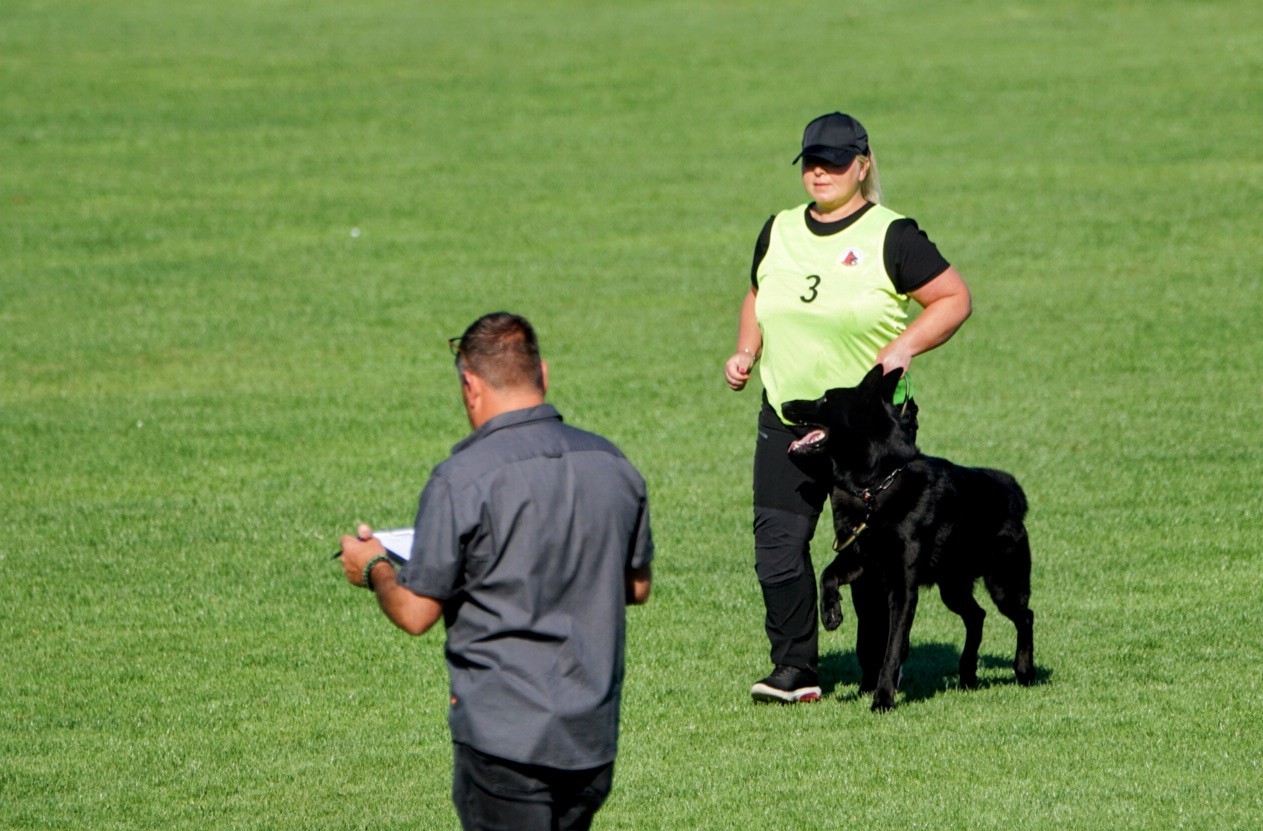
The sport which is widely popular in Germany is using many German terms and runs under "Schutzhund" which is German for "protection dog". It is currently most widely known competitively as IGP and previously as IPO. The participants form a team with their dog and test the dog's tracking, obedience, and protection skills, and are evaluated to see if a dog has the appropriate traits and characteristics of a good working dog.

The first Grand Prix of Croatia took place in 2016, with a break due to Corona in 2020, and was able to attract 14 handlers and their dogs from different countries again this year for the sixth time.
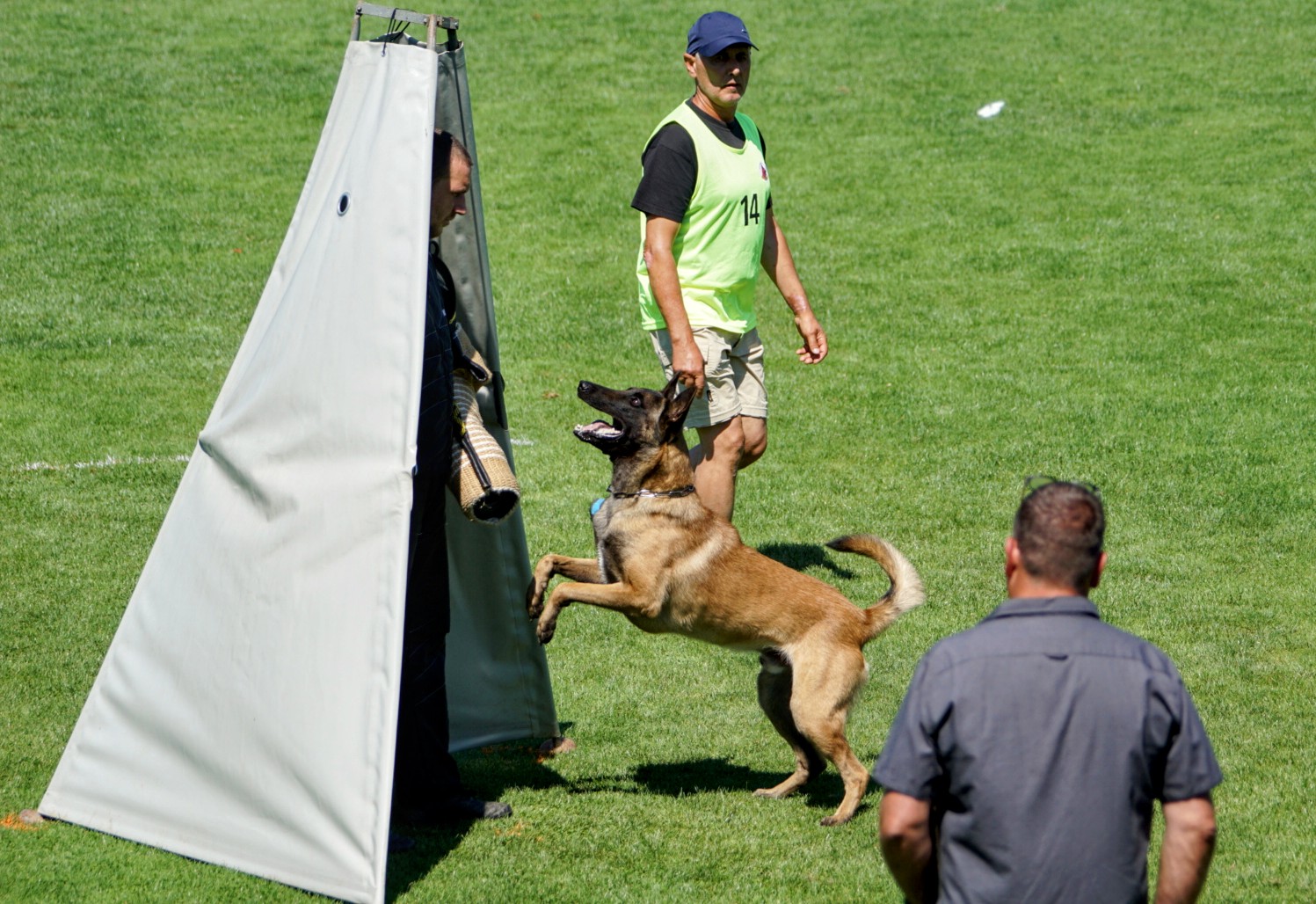
During the weekend of the 11th and 12th of June 2022 competitions were held in the following categories: IGP 1-3 (tracking, obedience, and protection), IBGH 1-3 (obedience), and BH/VT (the entry qualification to participate in working dog competitions).
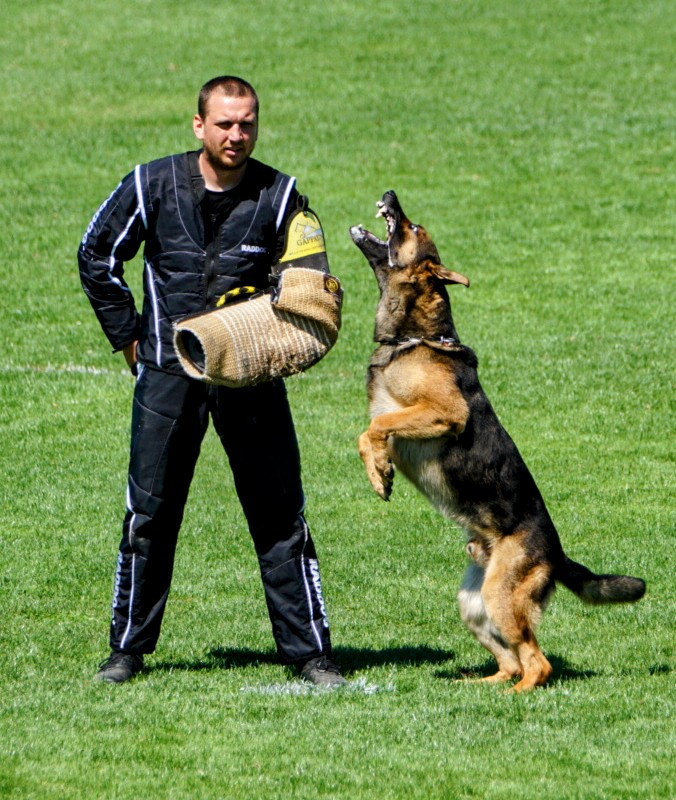
The 6. Grand Prix Croatia was also the 3rd round qualification for the Croatian National Championships for all breeds, which will be held on 22. – 23.10.2022 in Vinkovci.
In addition, the 6. Grand Prix Croatia was a Croatian Club Championship and a direct qualification for World Championships in 2023.
Judges: Mike Greub (Switzerland) and Ivan Miholić (Croatia)
Results:
IGP 1:
1. Martina Radnić
IGP2:
1. Ivan Magdalenic
IGP 3:
1. Vjekoslav Antić
2. Mathias Utesch
3. Hrvoje Joja
4. Milan Škorić
5. Josip Mišon
6. Juergen Reinhauer
IBGH1:
1. Martina Vučemilović
2. Jessica Canboy
3. Hrvoje Joja
IBGH2:
1. Jasenka Obradović
2. Anka Mativina
BH/VT:
Frank Marquardt
For more, check out our sport section.
First Marian Shrines Spiritual Heritage Congress to be Held in Sinj
June 13, 2022 - The first Marian Shrines Spiritual Heritage Congress will be held from June 17 to 19.
The Blessed Virgin Mary has always been a great support and heavenly advocate for the Croatian people. Croats have always worshiped and prayed for her help in difficult times and troubles, and with great confidence honored her out of gratitude as a queen and the most faithful lawyer.
In Sinj, one of the largest Croatian Marian shrines, the Feast of the Assumption of the Blessed Virgin Mary, August 15, is celebrated with special solemnity every year. An endless number of pilgrims, of all generations and from all parts of the country and beyond, come to Sinj with only one goal - to kneel and fold their arms before the Miraculous Lady of Sinj, to bow to silent prayer, to pray and give thanks to the heavenly Mother, to light a candle before Our Lady and open your heart to Her grace. The miraculous Our Lady of Sinj is the heavenly patroness of the city of Sinj, so City Day is celebrated on August 15.
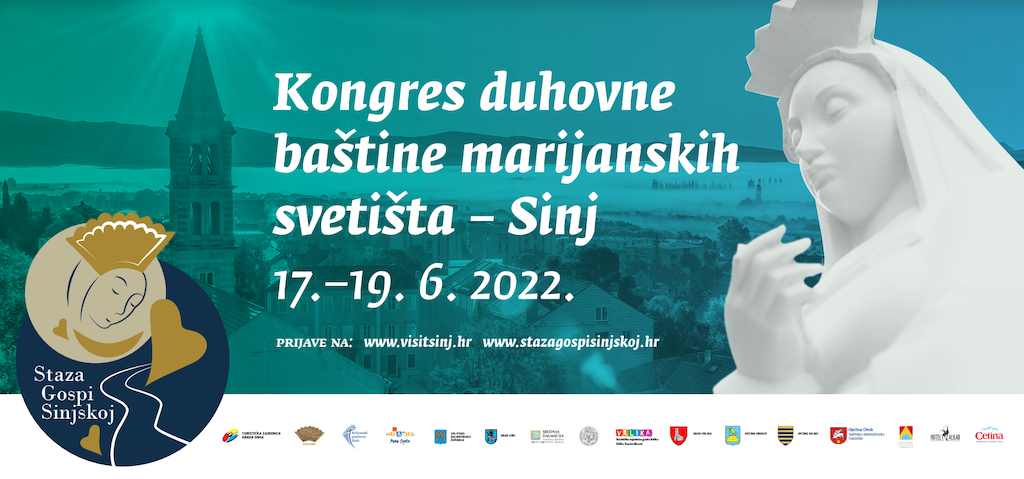
Therefore, Sinj is an ideal place to hold a congress called the Marian Shrines Days of Spiritual Heritage. The Congress will be held from 17 to 19 June 2022, organized by the Sinj Tourist Board and with the wholehearted support and cooperation of the Shrine of Our Lady of Sinj and the Christian Business Club from Zagreb. Also, this congress can be held thanks to loyal sponsors: Split-Dalmatia County, City of Sinj, Split-Dalmatia County Tourist Board, Alkar Knights Society, Vrlika Tourist Board, City of Vrlika, Hrvace Municipality, Dicmo Municipality, Otok Municipality, Museum of Croatian Archaeological Monuments in Split, Hotel Alkar, Cetina.

Ivana Tepes

Zeljko Zrncic
The goal of this meeting is to popularize and thus preserve the existing sacral heritage of Croatian Marian shrines in the long run. Marian shrines are beacons of hope for all believers, so the idea is to contribute to their preservation by developing sacral tourism, and thus local communities while attaching importance to spirituality and religion in order to preserve the primary function of the shrines themselves.

Zeljko Zrncic
The Marian Shrines Spiritual Heritage Congress will include shrines from Marija Bistrica, Trsat, Nin, Voćin, Solin, and Sinj (and/or others) from Croatia, as well as Marian shrines of the Croatian people in neighboring Bosnia and Herzegovina and Montenegro. Thus, the shrine on the Shield in Prozor (Rama), which is connected with Sinj with the Miraculous Image of the Mother of Mercy, and the southernmost Marian shrine of the Croatian people, the Shrine of Our Lady of Mercy in the Bay of Kotor, will attend this gathering.

Ivan Alebic
Below is a detailed program of the congress that will take place over three days, and all those interested in participating in the first congress, please apply via the following link: https://stazagospisinjskoj.hr/
Friday, June 17, 2022:
8:30 - 9:00 Sv. Mass - Shrine of the Miraculous Lady of Sinj
9:00 Registration of participants - Shrine of the Miraculous Lady of Sinj
9:30 Opening, opening remarks and prayer
10:00 Br. Ante Čovo - manager of the Shrine of Our Lady of Sinj, Sinj
10:15 Rev. Domagoj Matošević - manager of the Shrine of Our Lady of Bistrica, Marija Bistrica
10:30 Br. Krunoslav Kocijan - manager of the Shrine of Our Lady of Trsat, Trsat
10:45 Refreshments
11:15 Rev. Ivan Ereiz - manager of the Shrine of Our Lady of Voćin, Voćin
11:30 Rev. Ivo Ćorić - Manager of the Shrine of Our Lady of Mercy, Boka Kotorska (Montenegro)
11:45 Don Jerko Vuleta - manager of the Shrine of Our Lady of Zečevo, Nin
12:00 Don Ante Čotić - manager of the shrine of Our Lady of the Island, Solin
12:15 Round Table - Spiritual Heritage of Marian Shrines (panelists: Rev. Domagoj Matošević, Br. Ante Čovo, Rev. Ivo Ćorić, Br. Krunoslav Kocijan, Joško Stella, Marija Dejanović)
15:00 Break
16:30 Gathering and trip
17:00 - 18:30 Walking the Path to Our Lady of Sinj: section Sinjsko polje - Sinj
18:30 - 20:30 Tour of Sinj: Grad Fortress, Franciscan Museum, and storytelling destinations in the interpretation of a guide through the character of Fr. Pavle Vučković
21:30 - 22:30 Concert of GZ Brodosplit (Church of the Miraculous Lady of Sinj)
End of day 1
Saturday, June 18, 2022:
6:00 - 8:30 Walk along the Path to Our Lady of Sinj: section Dicmo - Sinj (alternative program)
8:30 - 9:00 Sv. Mass - the sanctuary of the Miraculous Lady of Sinj
9:00 Registration of participants on the second day - Alkarski dvori
9:30 Opening, opening remarks and second-day prayer
9:45 Miroslav Katic - Museum of Croatian Archaeological Monuments in Split - Pilgrimages and shrines in Dalmatia from the Late Antiquity to the Middle Ages
10:00 Lino Ursić - Office for Tourism and Maritime Affairs of the Split-Dalmatia County - Sacral heritage of the island of Brač
10:15 Krešimir Čeko - Marian vow for the Homeland
10:30 Fra Domagoj Runje - Pilgrims on the Path of Our Lady of Sinj
10:45 Refreshments
11:15 Marija Pražen - Putevi sv. Jakova - Camino Croatia
11:30 Rujana Bušić Srpak - Interwoven with faith - Vukovar-Srijem County Tourist Board
11:45 Ante Jurčević - Archaeological Museum in Split - Protection, and presentation of the tomb of St. Domnius at the Monasteries in Salona
12:00 Rev. Antun Sente - manager of the National Shrine of St. Josipa, Karlovac
12:15 Round Table - Guidelines for the Development of Religious Tourism in Croatia (panelists: Rev. Tomislav Korov, Matea Dorčić, Rev. Anđelko Katanec, Jelena Stupalo, Stipe Božić, Krešimir Čeko)
14:30 Break
16:00 Gathering and trip
17:00 - 19:00 Excursion Vrlika - the source of the Cetina, the church of Sv. Spas, pločasti bridge, history lesson Mr. Miroslav Katic, director of the Museum of Croatian Archaeological Monuments
21:30 - 22:30 Play Battle of Sinj, Act 2 - Sinj, Alkarski dvori
End of day 2
Sunday, June 19, 2022:
9:00 - 10:00 Sv. Mass - Shrine of the Miraculous Lady of Sinj
10:00 End of the First Congress of the Spiritual Heritage of Marian Shrines - Sinj 2022.
For more, make sure to check out our dedicated lifestyle section.
Current Croatia National Team Jerseys Worn for Last Time, New Design Coming for 2022 World Cup
June 13, 2022 - The 4th round of the Nations League tonight in Paris marks the end of the current Croatia national team jerseys, as the away kit will be worn for the last time at Stade de France. The home kit was retired against France at Poljud last week, and new kits are expected for the 2022 World Cup.
Another 2018 World Cup final rematch between France and Croatia takes place tonight in Paris at Stade de France as part of the Nations League 4th round, reports Gol.hr.
Apart from the fact that Croatia will be looking for its first victory against France in their 10th meeting, this match will also be remembered as the last time the Croatia national team away jersey will be worn ahead of its new design for the 2022 World Cup.
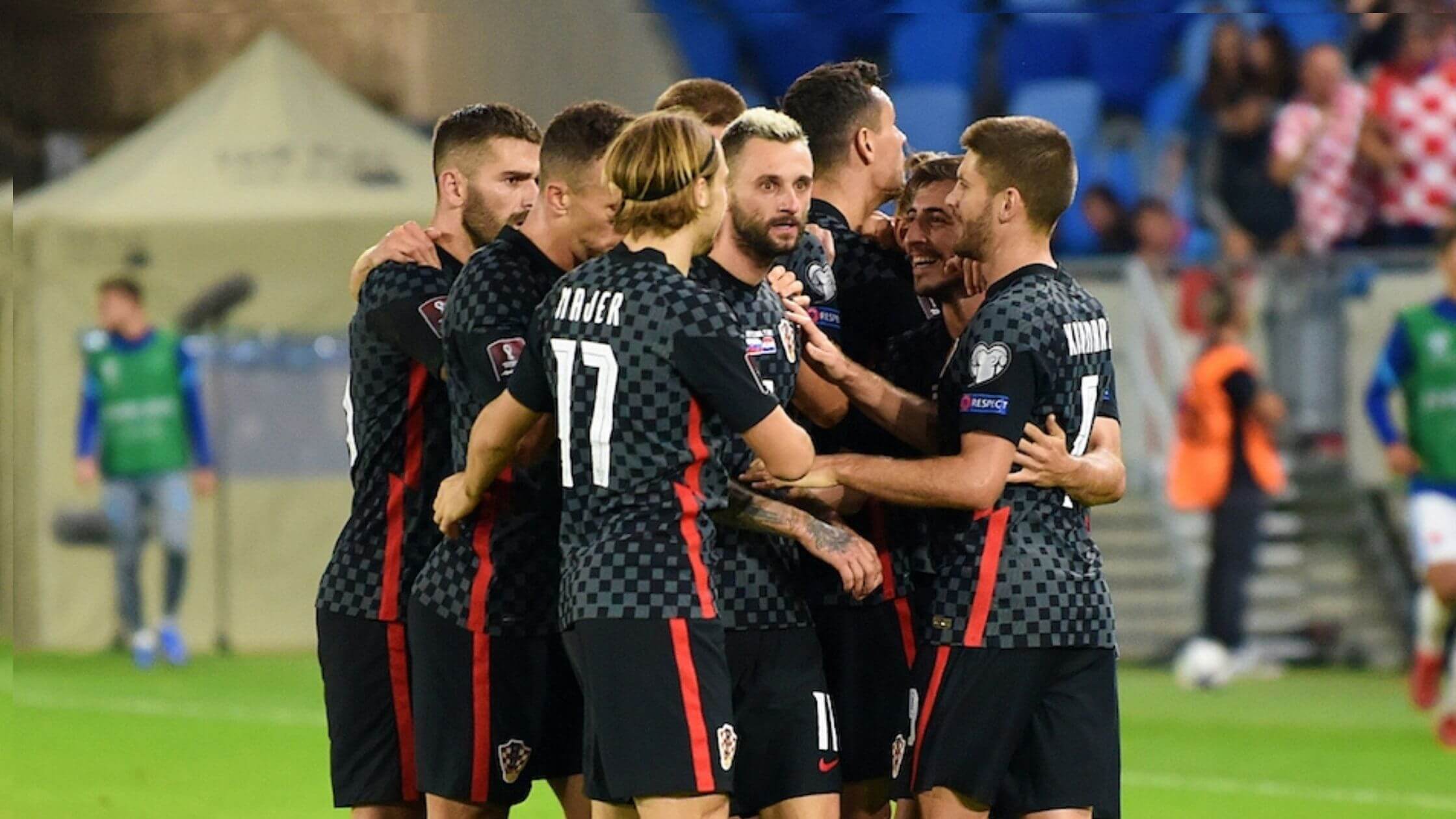
Slobodan Kadic
Croatia had already said goodbye to its current home kit - the classic red and white checkers - when they played against France in the 2nd round of the Nations League at Poljud last week. These jerseys saw the light of day after the 2018 World Cup in Russia.
The Croatia national team will wear new jerseys at the 2022 World Cup in Qatar. The new jersey design will premiere at the two September Nations League matches - the first will be played against Denmark in Croatia and the second away against Austria.
The exact design of the new jerseys is still unknown and has not been announced in any manner by HNS, but the famous portal footyheadlines.com, dedicated to club and national team jerseys, has already toyed with how they may look.
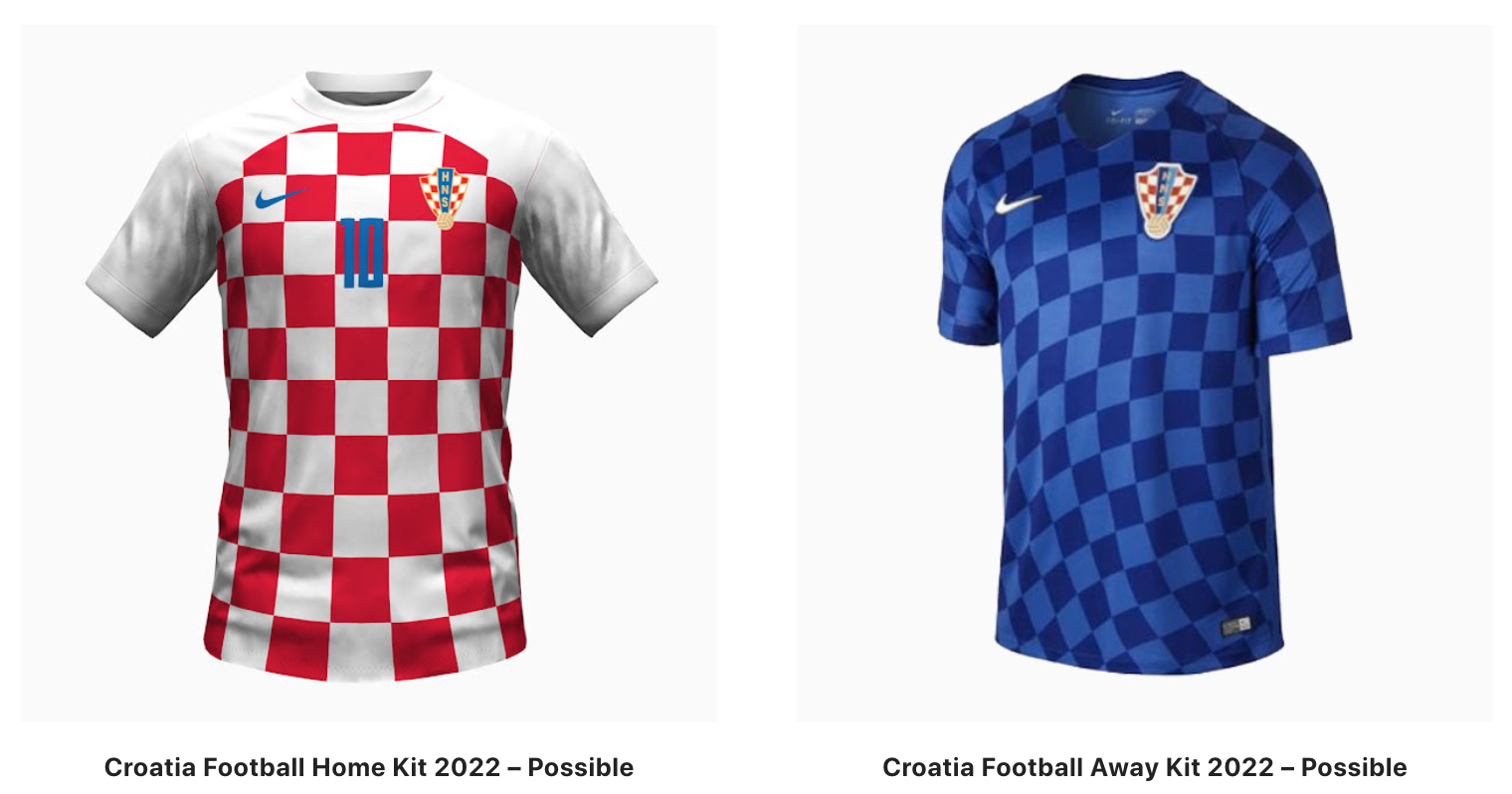
Footy Headlines used leaked information or projections of Nike's template for the 2022 World Cup.
They are inspired by the famous sets of other clubs and national teams for next season. Since they know what will be in style next season or what colors and designs will dominate in the football world, they were able to speculate about Croatia's possible new kit.
The Croatia home jersey is usually composed of red, white, and blue, always with the Croatian coat of arms, the now world-famous red and white checkers.
Footy Headlines claim that the blue color will be different than usual. It will be a little brighter, royal blue, the so-called “Battle Blue” Swoosh.
They underline that Nike presented only a sample of blue and white in its internal catalog, while red remains unknown. This is explained by Nike’s designs for next season. First, they pointed to the new Barcelona jersey, which is dominated by shades of blue, while red is on the defensive.
The portal claims that the Croatia national team away jersey will combine navy blue with red patterns.
For more, check out our sport section.
How Much Does it Cost to Raise Children in Croatia?
June the 13th, 2022 - Just how much does it cost to raise children in Croatia? From the spending done during pregnancy to the first year or two of life, all the way to the end of the college years, the numbers are enough to put many off as Croatian women choose to start families later and later in life.
As Poslovni Dnevnik writes, Croatian women are giving birth later and later in life, and there are more and more young women who simply don't want children at all. The reason for this, among many other personal ones, could be the fact that children are simply ridiculously expensive. Raising children in Croatia, while more favourable economically than some other countries, still doesn't come anywhere close to cheap.
Issues that people take into account when thinking about parenting concern the overall uncertainty, growing debt, poor housing markets and the labour market situation, and even climate change.
How much does it cost to raise children in Croatia? According to the data gathered by the Stedopis association, at least 460,000 kuna is needed to get a child into a decent faculty, and along with studying, those related costs rise to more than 630,000 kuna. However, this is only an estimate because there has been no real in depth research on this topic, nor is there a calculator to calculate the costs involved to raise children in Croatia, unlike in America, where people can estimate how much raising their child will cost, and as such plan more accurately.
Pregnancy and the first year of a child's life in Croatia
Expectant parents will start spending cash on their child before it even enters the world. It's necessary to buy their first clothes, buy a baby cot/crib, purchase a good stroller, buy a baby bath tub, a changing table and diapers for the first days of their lives. One mother told Stedopis that she spent 30,000 kuna in the first year of her child's life alone. She claims that she used preloved equipment, that is, that she only bought a stroller and a crib.
The price of one diaper/nappy ranges from 1 to 1.50 kuna, and five to ten a day are needed. If we take into account that most Croatian parents buy cheaper diapers, at the price of one single kuna per piece, and the child requires five of those per day (which isn't all that realistic, especially in the first weeks when more than five are needed), then you can set aside a minimum of 1825 kuna per year just for diapers. If the mother isn't breastfeeding, she will also need to purchase formula, the price of which is 50 kuna or more, depending on the weight and age of the baby.
Preschoolers
In addition to clothing and cosmetics, the child's parents may also need to finance a crèche, a kindergarten, as well as various activities. This means that by primary school age, parents can spend up to 150 thousand kuna per child.
Elementary school students
When the child starts attending school, they will need a school bag and accessories, which costs about a thousand kuna in total. One family calculated for they spend around 27 thousand kuna a year on their elementary school student. So, up to the 12th year of a child's life, parents raising children in Croatia will need to invest an additional 135 thousand kuna per child. These include a desk, chair, a larger, more age approproiate bed, a computer (tablet), school meals, extracurricular activities, school trips, birthdays, pocket money, clothes and shoes, and so on.
Teenagers
The minimum alimony for 2022, for a child aged 13 to 18, is 1,568.38 kuna per month, but that sum isn't even close enough to meet all the costs (and needs) of teenagers.
"The costs in the third and fourth grade of high school is the highest because you have to pay for their prom trip, maybe also the preparations for the prom, the prom dinner, the formal clothes. Even if a basic visit to the dentist and an ophthalmologist ends with a recommendation for orthodontic braces and/or glasses, then that's an additional 14 thousand kuna in one go. In short, a parent with a child between the age of 13 to 18 will need to spend a minimum of 180 thousand kuna. In previous years, the amount reached 465 thousand kuna,'' they say from Stedopis.
Students
The EUROSTUDENT VII report published back in 2021 revealed that the total semester costs of studying per student in the Republic of Croatia average 16,593 kuna, or 33,186 kuna per year. These amounts include the cost of living and studying. During five years of study, that sum can quite easily reach a massive 165,930 kuna.
When we add it all up, to raise children in Croatia, parents have to set aside a minimum of 630,930 kuna per child to pay for all of their needs by the end of their college education.
For more, make sure to check out our dedicated lifestyle section.
Conde Nast Traveler Declares Rovinj Most Beautiful European Beach Town
June the 13th, 2022 - The globally read and well respected traveller's publication, Conde Nast Traveler, has ranked the gorgeous City of Rovinj among the most beautiful European beach towns one can visit, shining a well deserved light on the stunning Istrian peninsula.
As Morski writes, Conde Nast Traveler, which is still very much a ''must read'' for many travellers seeking destinations to visit, has compiled a list of the most beautiful seaside/coastal towns in Europe. No less than the very first place was taken by Istria, more precisely the beautiful City of Rovinj.
Rick Jordan, one of the authors of the widely read magazine, makes no effort to hide how fascinated he is by the Croatian coast and numerous Croatian seaside towns and cities. He has been coming to Croatia regularly since the 1980s and absolutely loves Dubrovnik, and the islands of Vis and Hvar. However, he chose Rovinj as the most beautiful beach town to exist in all of Europe, as reported by Index.
Idyllic Rovinj fascinates him "with its coast, medieval walls and the old town, pine forests, small coves, seafood and Malvazija wine". In addition to all of that, Jordan was impressed by "every bike ride to the port, as well as small restaurants located on the edges of the rocks by the sea."
Behind the Republic of Croatia on this particular Conde Nast Traveler list are Italy, Portugal, France, Spain, Greece and a handful of other countries. Second place went to Plage de Saleccia, a sandy beach with turquoise sea located in the north of the French island of Corsica.
The third place on the list compiled by the aforementioned travel magazine was taken by Favignana, one of the five islands of the Egadi Islands.
Istria tends to lure in many with its fairy tale-like charm, beautiful hilltop towns and stunning interior and coastline, having also well and truly enchanted the NY Times journalist who visited various sights across this region by bike and explored the Istrian gastronomic offer in a large photo report. He spent six days on the road in total.
For more, make sure to check out our dedicated travel section.
USA Swimming Team Training at Rijeka Kantrida Pools
June the 13th, 2022 - The USA swimming representation is preparing and training for the world championships at no less than the Rijeka Kantrida pools - and for the third time.
As Morski writes, the much loved Rijeka Kantrida pools, from where a gorgeous view of the Kvarner Bay can be seen, has caught the eye of the American swimming team, which arrived in Rijeka on the eve of the World Swimming Championships for their final preparations.
The USA national swimming team consists of 41 swimmers and 30 staff members, and preparations are underway at the Rijeka Kantrida Pools for the World Swimming Championships, which will be held in the Hungarian capital of Budapest from June the 8th to the 25th. The American national team chose the Rijeka Kantrida Pools for their preparations for the third time - they have already held their training camps in the City of Rijeka in both 2015 and 2017.
Olympic champions Ryan Murphey and Leah Smith, who are preparing at Rijeka's famous pools for the third time now, are also preparing for the World Championships. Ryan Murphey is one of the best backstroke swimmers in the world: he is a multiple-time Olympic winner (Rio de Janeiro in 2016 and Tokyo in 2021) and a multiple winner of gold medals at world championships, while Leah Smtih is a multiple winner of Olympic and world medals.
''The Rijeka Kantrida Pools, the construction of which was completed ten years ago, were specifically planned with the aim of providing quality conditions for training and competitions of athletes, as well as the recreation of non professionals, and the location of the swimming pool complex near the Adriatic Sea makes it one of the most beautiful in the entire Mediterranean,'' Rijeka Mayor Marko Filipovic said at a press conference.
He stressed that the pool complex was primarily planned to provide quality conditions for people to play sport, swim and enjoy some recreation time, but also has its commercial note, especially in preparation for important international swimming competitions, which greatly contributes to the promotion of Rijeka and Croatia as a whole as tourist destinations.
In addition to the Americans, the Rijeka Kantrida Pools have so far been used by the national teams of Norway, Denmark and Austria, Japan, Estonia, Germany, Sweden, Latvia, Slovenia and the United Kingdom. In a recreational sense, the pools have been used by about 3.5 million users, or almost a thousand a day. The Singapore national team and the long-distance swimming team from Great Britain are also currently training in Rijeka. Rijeka as a city has continued to record some very good numbers in terms of water sports - in the first five months of this year, the city recorded 5% more reservations from different groups compared to the pre-pandemic year of 2019.
For more, check out our sport section.
Information Day Being Organised for Omisalj Archaeology Parks
June the 13th, 2022 - An information day is being organised for the Omisalj archaeology parks as part of a wider project with the aim to increase the level of interest of locals in preserving local cultural identity.
As Morski writes, an Info Day within the scope of the wider TRANSFER project, which is being implemented as part of the Interreg Adrion programme, will be held on June the 14th, 2022, at the Mirine archaeological site in the Municipality of Omisalj, starting at 09:00.
The aim of this event is to increase the participation and interests of local communities and relevant stakeholders and to further strengthen cultural identity. In order to raise awareness of the importance of Omisalj archaeology parks and sites and convey the concept of their integrated protection and valorisation within the project, the upcoming event will present the objectives and activities of the aforementioned project and illustrate the need for a participatory approach to Omisalj archaeology park management.
The Municipality of Omisalj, as one of the twelve partners of the TRANSFER project, is participating in the preparation of the document related to the Joint Sustainable Management Model, which resulted in the management plan of the Mirine - Fulfinum Archaeological Park. As part of the project, the municipality is also participating in Pilot actions that will be carried out across six Omisalj archaeology parks, including Mirine-Fulfinum.
Lessons learned from the Pilot Actions, together with inputs from local communities, relevant stakeholders and the experience of young people during study visits, will be used for the final revision of the Common Model. In addition to the above-mentioned activities, the municipality will participate in the development and implementation of a virtual reality app that will enable a virtual walk through the archaeological area of Mirina - Fulfinum.
The TRANSFER project, in which the Municipality of Omisalj participates as one of twelve partners, is being co-financed through the European transnational programme (ADRION), which promotes cooperation between 8 countries: Albania, Bosnia and Herzegovina, Croatia, Greece, Italy, Montenegro, Serbia and Slovenia.
The overall goal of the Transnational Cooperation Programme is to strengthen European integration among the aforementioned partner countries through innovative policies and management processes, as well as to further increase the economic, social and territorial cohesion of the Programme Area by using rich natural, cultural and human resources in the Adriatic and Ionian Sea.
For more, make sure to check out our dedicated lifestyle section.


